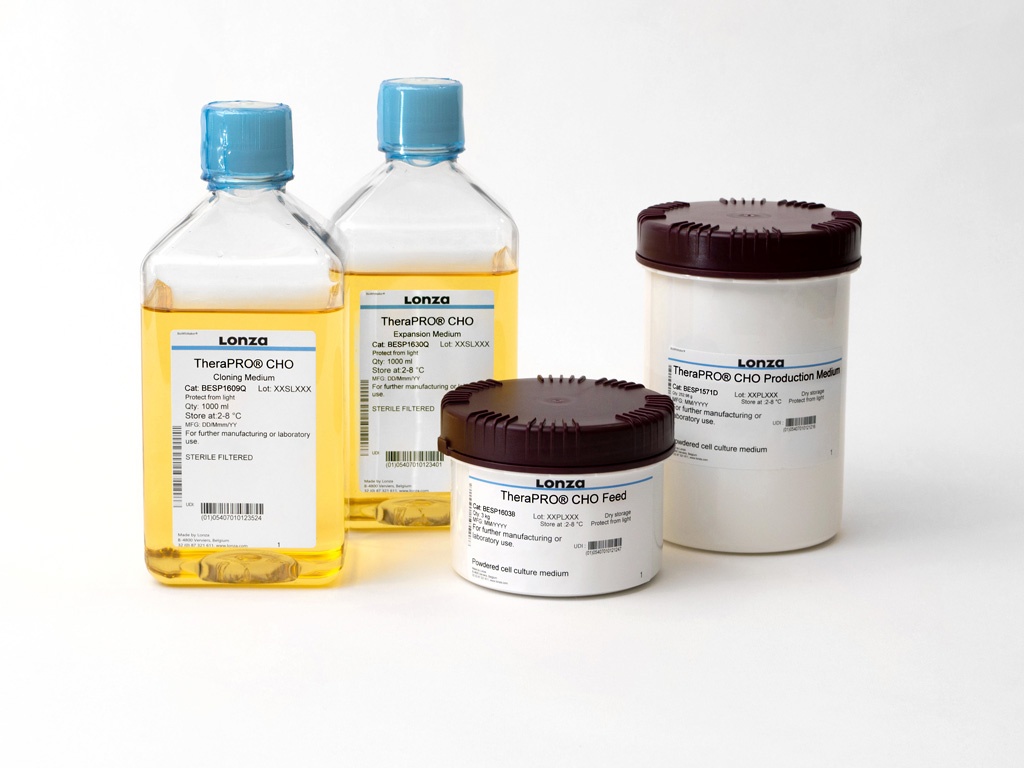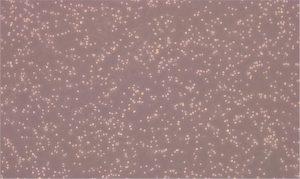Protein and vaccine production is commonly used by the pharmaceutical industry to generate bio-therapeutic products.
Protein Therapeutics
Therapeutic proteins are commonly engineered in pharmaceutical laboratories to generate human protein therapeutics. The first protein therapeutic was insulin derived from recombinant DNA in 1982. Bacteria expression systems and mammalian cell lines such as Chinese Hamster Ovarian (CHO) are used to produce therapeutic proteins, antibodies, enzymes or hormones that can be injected into humans or animals to treat diseases.
Vaccine Therapeutics
Virus production to produce vaccine particles to stimulating the immune system is a classic approach. When using vaccines for gene therapy the utilization of the virus is slightly different, it will act as a gene delivery vector, the three most common viruses vectors are:
- Retroviruses (for insertion of DNA; ex-vivo or in-vivo)
- Adenoviruses (for transient expression)
- Lentiviruses (for ex-vivo transient and stable gene expression)
Pharmaceutical companies use one or more bio-therapeutic methods to treat or potentially cure a disease.

Easy-to- Use Media System for CHO Cells
Download Poster
TheraPRO® CHO Media System – Protein production made simple Read More
What is protein production?
Protein production systems, also referred to as an expression system, are commonly utilized by the pharmaceutical industry to produce novel medicines. Protein production is the biotechnological process of generating a specific protein. It is achieved by the manipulation of gene expression in an organism such that it expresses large amounts of a recombinant gene. This expression process includes the transcription of the recombinant DNA to messenger RNA (mRNA). When the mRNA is translated into polypeptide chains, the chain folds into functional proteins and can then be targeted to specific subcellular or extracellular locations.
Protein production, to produce a protein or antibody of interest, is a multi-step process.
Steps to take before starting protein production
Target identification
Target validation
Hit identification and lead generation (H2L)
Lead optimization
Preclinical testing
Clinical phase
- Phase I – first human studies – mainly safety testing on healthy persons
- Phase II – testing different doses on patients
- Phase II – expand test panel, efficacy, and meet primary and secondary endpoints
- Phase IV – post marketing safety study, tackle safety concerns, different populations, and sometimes-rare side effects
Market ready
When the biologic is approved for market release; protein production on a large scale is required.
Which expression system to choose for protein production
Many organisms can produce proteins. See the table below for major organisms and important cellular characteristics.
| Characteristics | Mammalian cells | Insect cells / Baculovirus | Yeast | E. Coli |
| Cell growth | slow | slow | rapid (± 90 min) | rapid (± 30 min) |
| Complexity of growth medium | complex | complex | simple | simple |
| Expression level | low – moderate | low – high | low – high | high |
| Extracellular expression | in medium | in medium | in medium | in periplasm |
| Posttranslational modifications | ||||
| Protein folding | proper folding | proper folding | refolding may be required | refolding usually required |
| Glycosylation | ++ | + | + | – |
| Phosphorylation | + | + | + | – |
| Acetylation | + | + | + | – |
| Acylation | + | + | + | – |
| gamma-Carboxylation | + | – | – | – |
Microorganisms, like Escherichia coli (E. coli) are easy to grow and express high levels of protein. So why is E.coli not always the ideal choice when producing recombinant proteins? The limitation lies within the protein folding process and the ability to produce complex proteins such as glycosylated proteins. Therefore, mammalian cell platforms are often utilized for complex protein production (posttranslational modifications – PTM). Although these mammalian cells may not proliferate as rapidly and may not yield as much protein as E.coli, these platforms are often selected for complex protein production to deliver protein therapeutics (i.e. biologics) in the biotech sector.
Transient or Stable transfection for protein production
- Transient transfection is ideal for the rapid production for small scale antibody (Ab) production. Transient gene expression results are often realized in 6-10 days from the initiation of DNA transfection.
- Stable transfection often begins transiently but through a process of careful selection and amplification, stable clones are generated. Within stable transfected cells, the foreign gene becomes part of the host genome and is therefore replicated. Descendants of these transfected cells express the foreign gene and become a stable cell line. Because this transfection process is complex and time consuming, it is more often used for large scale Ab production.
Products produced using protein production
There are a variety of products that can be produced via protein production:
- Modified human proteins (protein-protein fusion products, drug-toxin conjugates, PEGylated protein drugs)
- Monoclonal antibodies (humanized or chimeric monoclonal antibodies, monoclonal antibody fragments, single chain antibodies, bispecific antibodies, antibodies to conjgate to a toxic payload (ADCs).
- Growth factors and cytokines (colony stimulating factors, interferons, interleukins)
- Hormones (insulin, erythropoietin, growth hormones)
- Blood products (blood clotting factors, thrombolytics, fibrinolytics, albumin)
Protein production methods
A protein can be produced in different ways:
Batch protein production
This is a large-scale closed culture system where cells are expanded in a fixed volume of medium with no additional additives. Since fresh media is not added during the incubation period, the concentration of nutrition decrease throughout expansion and various toxic metabolites accumulate. A batch culture will follow the characteristics growth curve with lag phase, log phase, stationary phase and decline phase.
| Operation Mode | Batch* | Fed Batch* | Perfusion* |
| Media Addition | Initial | Periodic | Continuous |
| Fluid Harvest | Final | Final | Continuous |
| Benefits | Less cell debris, lower risk of contamination | High titer | High productivity |
| Disadvantages |
|
|
|
*These processes are only appropriate for proteins that are excreted into the media, ie this method is not applied to intracellular expression proteins.
Fed-batch protein production
A semi closed system for protein production where one or more nutrients (feeds) are added in intervals into a bioreactor. The product(s) remain in the bioreactor throughout the production process.
Perfusion protein production
Perfusion carried out by continuously feeding fresh medium into the bioreactor and simultaneously removing the cell-free spent medium as the cells expand in the bioreactor. The cell density remains constant by maintaining a constant dilution and flow rate.
A vaccine is a biological preparation that is made up of very small amount of weak or dead germs that can cause diseases. (1) It prepares your body to fight the disease faster and more effectively so you won’t get sick (1). This biological preparation made from vaccine manufacturing, stimulates the body’s immune system to recognize the agent as a threat, destroy it, and to further recognize and destroy any of the microorganisms associated with that agent that it may encounter in the future (2). Viral particles, a key component for many vaccine classes, can be employed for either prophylactic or therapeutic applications. While viral particle manufacturing has classically focused on producing vaccines that are used to stimulate the immune system, an increasing interest in viral particle manufacturing for use as gene delivery vectors for cell and gene therapy has been driving growth and acceleration in this field.
Read More



